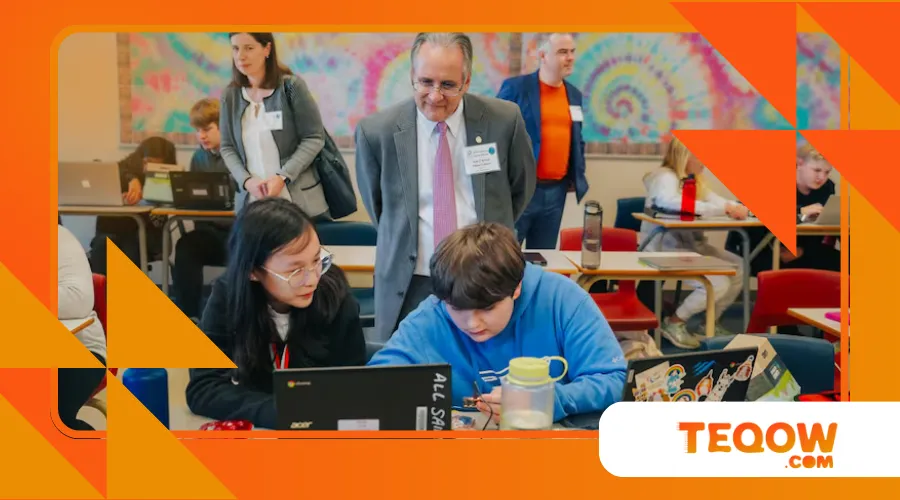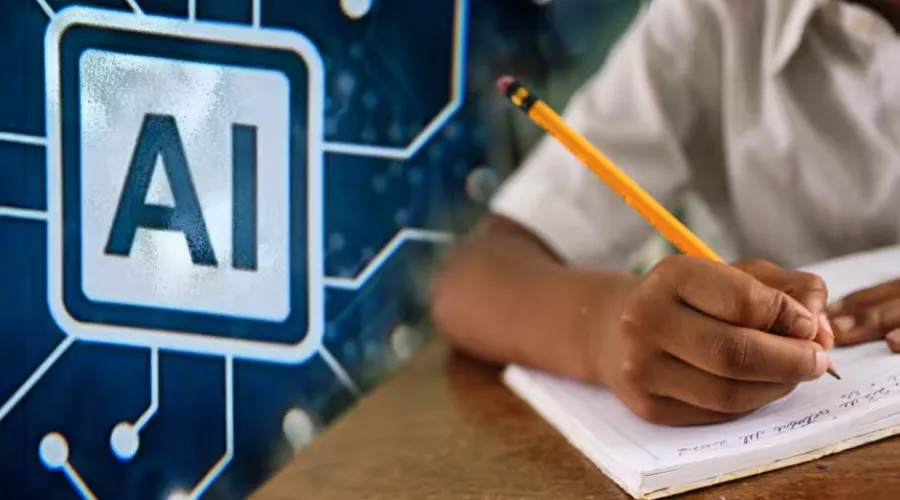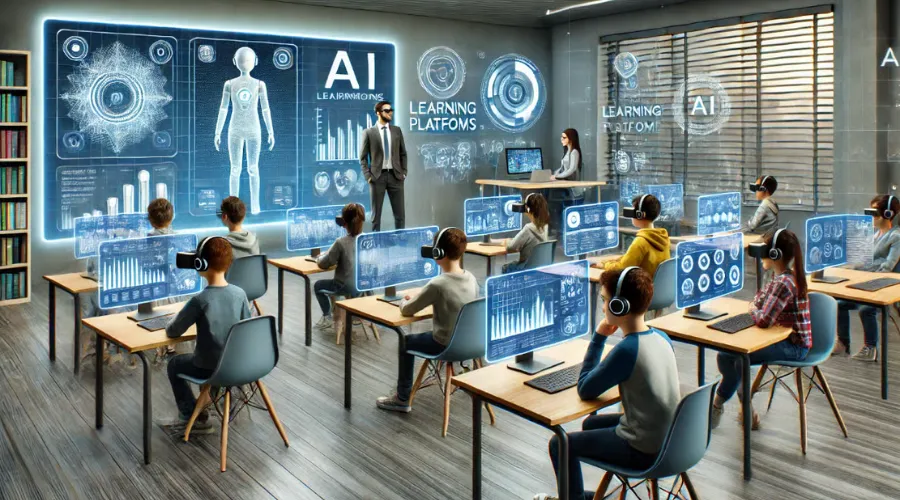AI in Classrooms: Innovative Pilot Programs Reshaping Learning in 2025

The integration of AI in classrooms is revolutionizing education, offering tools to personalize learning, streamline teaching, and spark curiosity.
In 2025, innovative pilot programs across Canada are showcasing how artificial intelligence can enhance, not replace, human instruction.
These initiatives are redefining what it means to learn in a digital age, equipping students with skills for an AI-driven future while addressing ethical and practical challenges.
This article explores how these programs are transforming education, with fresh perspectives on their impact, supported by data, examples, and actionable insights for educators and parents.
The Dawn of Personalized Learning
Imagine a classroom where every student learns at their own pace, guided by an invisible tutor who adapts to their needs.
This is no sci-fi fantasy but the reality of AI in classrooms today.
Pilot programs, like the one launched in British Columbia’s Vancouver School District, are using AI-powered platforms to create tailored learning paths.
These systems analyze student performance in real-time, adjusting lesson difficulty and suggesting resources to address gaps.
For instance, a grade 8 student struggling with algebra might receive interactive visualizations, while a peer excelling in the subject is challenged with advanced problems.
A 2024 study by the University of Toronto’s Faculty of Education found that students using AI-driven adaptive learning tools improved their math scores by 18% compared to traditional methods.
This statistic underscores the potential of AI to close learning gaps, particularly for students who might otherwise fall behind.
Why settle for one-size-fits-all education when AI can craft a bespoke experience for each learner?
For more information on these advancements, you can visit CBC News.
Empowering Teachers, Not Replacing Them
Far from rendering teachers obsolete, AI in classrooms acts as a force multiplier, freeing educators from repetitive tasks to focus on what they do best: inspiring students.
In Ontario, a pilot program called “TeachAssist AI” equips teachers with tools to automate grading and lesson planning.
For example, a history teacher in Toronto used the platform to generate discussion prompts about the Confederation of Canada, saving hours of preparation and sparking lively classroom debates.
By handling administrative burdens, AI allows teachers to prioritize mentorship and creativity.
This shift is critical in a system where teacher burnout is a growing concern.
AI tools streamline workflows, enabling educators to devote more time to fostering critical thinking and emotional intelligence—skills no algorithm can replicate.
The analogy here is clear: AI is like a sous-chef in a bustling kitchen, prepping ingredients so the chef can focus on crafting a masterpiece.
Table 1: Benefits of AI for Teachers in Pilot Programs
| Task | AI Tool Function | Impact on Teachers |
|---|---|---|
| Grading | Automated essay and quiz scoring | Reduces grading time by up to 60% |
| Lesson Planning | Generates customized lesson plans | Saves 5-10 hours per week |
| Student Feedback | Provides real-time performance analytics | Enables targeted interventions |
| Classroom Management | Tracks engagement and behavior patterns | Improves classroom dynamics |

Ethical AI: Building Trust in the Classroom
As AI in classrooms gains traction, ethical considerations take center stage.
How do we ensure these tools are used responsibly?
Pilot programs in Alberta are addressing this by embedding AI literacy into curricula.
Students learn not just how to use AI but how to question its outputs critically.
For example, a Calgary middle school introduced a module where students fact-check AI-generated summaries about climate change, fostering skepticism and media literacy.
These programs emphasize transparency, ensuring students and parents understand how AI tools collect and use data.
Schools are also prioritizing inclusivity, designing AI systems that accommodate diverse learning needs, such as multilingual interfaces for Canada’s growing immigrant population.
By teaching students to navigate AI ethically, these initiatives prepare them for a world where technology is omnipresent but not infallible.
+ Automatic RESP Enrollment Begins in 2028: How Parents and Kids Will Benefit
Bridging the Digital Divide
Access to technology remains a hurdle in Canada’s diverse educational landscape.
Rural and Indigenous communities often lack the infrastructure for robust AI integration.
However, innovative pilot programs are tackling this challenge head-on.
In Manitoba, the “ConnectEd AI” initiative partners with local telecoms to provide high-speed internet and AI-enabled devices to remote schools.
A grade 10 student in a First Nations community, for instance, used an AI language tutor to strengthen her French skills, preparing her for a bilingual career.
These efforts highlight a broader truth: AI in classrooms must be equitable to be effective.
Programs that prioritize accessibility ensure that no student is left behind, regardless of geography or socioeconomic status.
The goal is not just to deploy technology but to create opportunities for all learners to thrive.

Table 2: AI Pilot Programs Across Canada in 2025
| Province | Program Name | Focus Area | Key Outcome |
|---|---|---|---|
| British Columbia | Adaptive Learning Pathways | Personalized math and science | 18% improvement in test scores |
| Ontario | TeachAssist AI | Teacher workload reduction | 5-10 hours saved weekly per teacher |
| Alberta | AI Literacy Curriculum | Ethical AI use and critical thinking | 90% student engagement in pilot classes |
| Manitoba | ConnectEd AI | Rural and Indigenous access | 200+ students reached in remote areas |
++ How the Canadian Education System Works: From Kindergarten to University
Fostering Creativity Through AI
Contrary to fears that AI stifles creativity, pilot programs show it can ignite imagination.
In Quebec, the “CreativeAI Studio” pilot encourages students to collaborate with AI on artistic projects.
A grade 11 student in Montreal used an AI tool to generate abstract visuals for a poetry project, blending human emotion with machine precision to create a multimedia presentation.
This fusion of art and technology fosters skills like problem-solving and innovation, which are vital in a workforce increasingly shaped by AI.
These programs challenge the notion that AI in classrooms is purely utilitarian.
By integrating AI into creative disciplines, educators are showing students how to harness technology as a partner in self-expression, not a replacement for it.
The result is a generation of learners who see AI as a tool for amplifying their unique voices.
Addressing Parental Concerns
Parents often worry that AI in classrooms might erode critical thinking or expose children to data privacy risks.
These concerns are valid, but pilot programs are proactively addressing them.
In Nova Scotia, schools hold “AI Open Houses” where parents interact with educators and technology experts.
These events allow parents to understand how AI is used to enhance learning while being informed about the safety measures in place.
These initiatives not only build trust but also educate families about the benefits of AI, ensuring everyone is comfortable with the integration of technology in classrooms.
